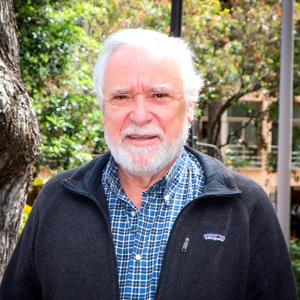Felipe Guhl Nannetti

Felipe Guhl Nannetti
Magíster En Microbiología
fguhl @uniandes.edu.co
Profesor Emerito
- : A5012034278
- Research Gate
- Orcid
- Google Scholar
- Scopus
- CvLAC
- Website
Departamento de Ciencias Biológicas
Perfil
Cursos Recientes
- 2024
PARASITOLOGÍA MÉDICA
Segundo Periodo
Licenciatura
PARASITOLOGÍA MÉDICA
Primer Periodo
Licenciatura
Productos Recientes
Títulos Académicos Recientes
Magíster En Microbiología
Maestría
Universidad De Los Andes, Colombia
1976
Colombia
Licenciado En Microbiología
Título de grado
Universidad De Los Andes, Colombia
1974
Colombia
Proyectos Recientes
- 2017
- Assessing the possible impact of palm tree plantations and climate change in Chagas disease transmission in the Casanare region
Duración: 59 meses
PR.6.2017.3835
The dynamics of vector-borne diseases has often been linked to environmental variables. Indeed, vectors and reservoirs strongly depend on their food supply and therefore they distribute accordingly. Chagas disease is not an exception; it is caused by Trypanosoma cruzi and its ecological relations involve insect vectors, mammal reservoirs, domestic species and humans, all with their own environmental restrictions. Chagas disease transmission persists in the Casanare region in Colombia, where traditionally the ample distribution of palm trees (Attalea butyracea) has supported a sylvatic cycle. Recent changes in land use, and in particular the now popular African palm trees plantations (Elaeis guineensis) have suggested a possible perturbation to the transmission cycle of T. cruzi. This observation is supported by recent reports that suggest colonization of the plantations by insects of the species Rhodnius prolixus, the main vector of Chagas disease in the region. The transmission cycle of the parasite is known to be complex but no body, to the extent of our knowledge, have characterized the cycle in terms of the type of species involved, their abundance and their relative importance in the risk of human infection. In addition, the possible change in the transmission cycle due to the palm trees monocrops have been suggested but have not been quantified. Thus we propose a project in which we will characterize the transmission cycle in disturbed and undisturbed areas in the region using a battery of ecological tools (field work, molecular analysis, mathematical modeling, GIS modeling-including climate change forecast) to quantify the change in the transmission cycle associated to palm trees monocrops.
- 2015
- filogeografía, estructura poblacional y diversidad genética de armadillos (Dasypus novemcintus, y Dasypus sabanicola) y su importancia como reservorios de Trypanosoma y Leishmania en el Oriente de Colombia.
Duración: 12 meses
PR.6.2015.2583
Cuatro especies de armadillos se encuentran distribuidas en el Oriente Colombiano, en la región de la Amazonía y Orinoquía. Se conoce relativamente poco sobre su historia de vida y su abundancia, por lo cual no es claro su estado de conservación en el país. Los armadillos pueden cumplir un papel importante en los ecosistemas en que habitan, ya que pueden construir nidos que luego pueden ser utilizados por otros animales. Así mismo, desde el punto de salud pública, los armadillos pueden ser reservorios de diversos parásitos que afectan a la población humana. Este proyecto pretende estimar niveles de diversidad genética, conocer la estructura genética y los patrones filogeograficos de tres especies de armadillos distribuidas en el oriente de Colombia, por medio de análisis de marcadores moleculares mitocondriales y nucleares, haciendo énfasis en el estudio genético del armadillo de nueve bandas. Adicionalmente busca poder identificar cuales especies son mas frecuentemente consumidas por cazadores en estas regiones, utilizando “códigos de barras moleculares” aplicados a tejido obtenidos de colas de estos animales. Por último, este proyecto busca ser el punto de inicio de una colaboración con investigadores en Argentina, México y Colombia sobre genética de armadillos y posible detección de parásitos como Trypanosoma y Leishmania en muestras de estos animales, utilizando una apoximación molecular.
Cursos
- 2024
PARASITOLOGÍA MÉDICA
Segundo Periodo
Licenciatura
PARASITOLOGÍA MÉDICA
Primer Periodo
Licenciatura
BIOLOGÍA CELULAR-TEO
Primer Periodo
Licenciatura
ADN FOSIL Y ARQUEOPARASITOLOGI
Primer Periodo
Maestría
TG,MONOGR,PASANTIA,EMPRENDIM
Primer Periodo
Licenciatura
TG,MONOGR,PASANTIA,EMPRENDIM
Segundo Periodo
Licenciatura
- 2023
- 2022
- 2021
- 2020
- 2019
- 2018
- 2017
- 2016
- 2015
- 2014
Productos
Títulos académicos
Magíster En Microbiología
Maestría
Universidad De Los Andes, Colombia
1976
Colombia
Licenciado En Microbiología
Título de grado
Universidad De Los Andes, Colombia
1974
Colombia
Licenciado En Biología
Título de grado
Universidad De Los Andes, Colombia
1973
Colombia
Proyectos
- 2017
- Assessing the possible impact of palm tree plantations and climate change in Chagas disease transmission in the Casanare region
Duración: 59 meses
PR.6.2017.3835
The dynamics of vector-borne diseases has often been linked to environmental variables. Indeed, vectors and reservoirs strongly depend on their food supply and therefore they distribute accordingly. Chagas disease is not an exception; it is caused by Trypanosoma cruzi and its ecological relations involve insect vectors, mammal reservoirs, domestic species and humans, all with their own environmental restrictions. Chagas disease transmission persists in the Casanare region in Colombia, where traditionally the ample distribution of palm trees (Attalea butyracea) has supported a sylvatic cycle. Recent changes in land use, and in particular the now popular African palm trees plantations (Elaeis guineensis) have suggested a possible perturbation to the transmission cycle of T. cruzi. This observation is supported by recent reports that suggest colonization of the plantations by insects of the species Rhodnius prolixus, the main vector of Chagas disease in the region. The transmission cycle of the parasite is known to be complex but no body, to the extent of our knowledge, have characterized the cycle in terms of the type of species involved, their abundance and their relative importance in the risk of human infection. In addition, the possible change in the transmission cycle due to the palm trees monocrops have been suggested but have not been quantified. Thus we propose a project in which we will characterize the transmission cycle in disturbed and undisturbed areas in the region using a battery of ecological tools (field work, molecular analysis, mathematical modeling, GIS modeling-including climate change forecast) to quantify the change in the transmission cycle associated to palm trees monocrops.
- 2015